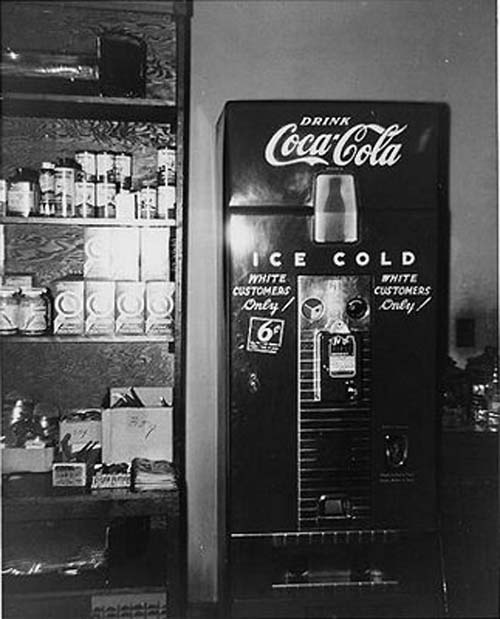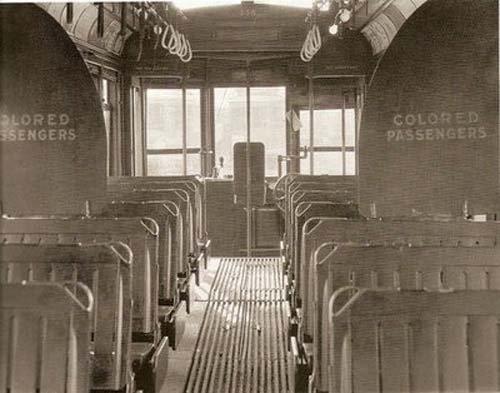
Havana, Tuesday June 11, 2013. Year 17 / Number 163
The open wounds of racism in the United States
By
Manuel E. Yepe
|
|
A CubaNews translation.
Edited by Walter Lippmann.
Five years ago, in June 2009, 146 years after Abraham Lincoln signed the
Emancipation Proclamation, and 150 days after Barack Obama took his oath
as President, the US Senate passed a resolution formally apologizing to
the black citizens of the United States for the suffering they and their
ancestors experienced under slavery and Jim Crow. In July 2009 the House
of Representatives did the same.
Both apologies acknowledged the inhuman nature of the slavery system and
“Jim Crow” practices – the name given to the period of intense racial
discrimination which followed the formal abolition of slavery in 1865-
whose marks were felt as the US version of apartheid until the decade of
the 1960s in the 20th Century.
That was a period of infamous racial discrimination –more violent and
inhuman in the Southern states than in the North–
that
kept millions of black citizens legally segregated from the white
population, limited their civil rights, and did not allow them to vote.
The name Jim Crow came from a comedian who, in 1828, wrote and sang the
song Jump, Jump, Jim Crow, about a black slave who danced while
brushing his master’s horse.
The term Jim Crow was used to identify activities and places
where a rigid segregation was in place: marriage, the professions,
schools, sports, neighborhoods, churches, cemeteries, universities,
taxis, trains, boats, buses, bars, restaurants, hotels, hospitals,
asylums, jails, drinking fountains, bathrooms, parks, barbershops,
circuses, fairs, theatres, movies, elevators, libraries, beaches, public
telephones, workshops, and brothels; this apartheid was even practiced
in police line-ups.
In some cities there was Jim Crow martial law which forbade blacks to be
in the streets after a certain hour in the evening. Under Jim Crow laws
blacks were excluded from unions and were not admitted to “white”
brotherhoods, societies or clubs. The Ku Klux Klan, the White Citizens
Councils and the John Birch Society among other American extreme
right-wing organizations added violence to insult.
During the 1960’s and 70’s, FBI Director J. Edgar Hoover, who considered
the Black Panther Party “the greatest domestic threat”, designed the
COINTELPRO program to repress the black liberation movement, and
frequently fabricated crimes to frame activists with false accusations.
To dismember this radical tendency, they used all kinds of tactics,
including the assassination of its leaders who were described as
criminals and were compared to those persons who opposed the Vietnam
War, supported the independence of Puerto Rico, or showed solidarity
with revolutionary Cuba.
In response, the black American civil rights struggle was intensified.
There were leaders such as Malcolm X and the Reverend Martin Luther
King, Jr. In the 1960’s, the struggle for racial equality produced
hundreds of martyrs.
The internal struggle for justice was spurred on by the consolidation
of the Cuban Revolution and the growth of anti-imperialist and social
justice ideas in Latin America; but the fear of retaliation by the
empire and its control of the media restricted the international
denunciation of these actions and limited global solidarity.
Nevertheless, a revolutionary situation was brewing and with this came
the need to recruit black soldiers for the Viet Nam war. This forced the
system to bury Jim Crow practices which were still strong in the South.
In the interests of its national security, the empire made reforms and
concessions on the issue of interracial relations. Among these there
were advent of black policemen, judges and mayors. On TV and cinema
screens, black actors and actresses no longer represented necessarily
subservient and complacent beings. A certain doctrine of formal
equality was maintained, though in fact there was still a real
separation because racism in all truth had disguised since the times of
slavery a profound system of class division in United States society.
Early in the 21st Century, in the United States there was an historical
achievement: the election of a President of black ancestry. This, of
course, has not been enough to erase –or repair–
the deprivations of human rights and the wounds in millions of lives
whose alleged emancipation had been proclaimed a century before.
Many forms of persecution, injustice, and racist offenses to human
dignity remain. Some of these shamefully prevail as viciously open
wounds.
June 2013.
http://www.granma.cu/ingles/international-i/20junio-resismo.html
La Habana, martes 11 de junio de 2013. Año 17 / Número 163 Las heridas aún abiertas del racismo
Por Manuel E. Yepe
|
|
Hace cinco años, en junio de 2009, 146 años después que Abraham Lincoln
firmara la Proclamación de Emancipación y a 150 días de haber jurado
Barack Obama como Presidente, el Senado de Estados Unidos aprobó una
resolución solicitando formalmente a la ciudadanía negra del país
excusas por los sufrimientos ocasionados a ella y a sus antepasados por
la esclavitud y las leyes Jim Crow. En julio de 2009 la Cámara de
Representantes hizo lo mismo.
Ambos disculpas reconocían el carácter inhumano del sistema esclavista
así como de la práctica del “Jim Crow”, como se conoce en Estados Unidos
al período de intensa discriminación racial que siguió a la abolición
oficial en 1865 de la esclavitud, cuyas huellas se hicieron sentir como
versión estadounidense de apartheid hasta la década de los 60 del
reciente Siglo XX.
Fue aquel un período de infamante discriminación racial -más violenta e
inhumana en los estados del Sur que en los del Norte- que tuvo a
millones de ciudadanos negros legalmente segregadas de la población
blanca y limitadas sus libertades civiles, sin derecho a votar.
El nombre Jim Crow lo aportó en 1828 un comediante quien compuso e
interpretaba la canción Jump, Jim Crow (Salta, Jim Crow), referida a un
criado negro que bailaba mientras cepillaba el caballo de su amo.
El término Jim Crow se utilizaba para identificar actividades y lugares
en los que aplicaba la rígida segregación racial: matrimonio,
profesiones, escuelas, deportes, barrios, iglesias, cementerios,
universidades, taxis, trenes, barcos, autobuses, bares, restaurantes,
hoteles, hospitales, asilos, cárceles, bebederos, baños, parques,
barberías, circos, ferias, teatros, cines, ascensores, bibliotecas,
playas, teléfonos públicos, talleres, burdeles y hasta en las colas se
practicaba este apartheid.
En algunas ciudades había ley marcial Jim Crow, que prohibía a los
negros salir a la calle luego de determinada hora de la noche.
Bajo las leyes Jim Crow, los negros estaban excluidos de los sindicatos
y no eran admitidos en hermandades, sociedades y clubes “de blancos”. El
Ku Klux Klan, los Consejos de Ciudadanos Blancos y la Sociedad John
Birch, entre otras organizaciones de la extrema derecha estadounidense,
aportaban violencia a la afrenta.
 Una máquina dispensadora de refrescos
Una máquina dispensadora de refrescos
con la indicación de solo para blancos.
En las décadas de 1960 y 1970, el Director del FBI, J. Edgar Hoover,
quien consideraba al Partido de los Panteras Negras "la mayor amenaza
interna", diseñó la iniciativa COINTELPRO para reprimir al movimiento
negro de liberación, frecuentemente acusado de delitos preparados para
encarcelar activistas bajo apócrifas acusaciones. Para desarticular esta
corriente radical se usaron todas las tácticas, incluyendo el asesinato
de sus líderes, catalogados de criminales y equiparados con quienes se
oponían a la guerra contra Vietnam, apoyaban la independencia de Puerto
Rico o mostraban solidaridad con Cuba revolucionaria.
En respuesta, se intensificó la lucha de los estadounidenses negros por
sus derechos civiles. Surgieron próceres de la talla de Malcolm X y el
reverendo Martin Luther King Jr. En la década de los años 60 la lucha
por la igualdad racial dio centenares de mártires.
La justa lucha endógena se vio incentivada por la consolidación de la
revolución cubana y el auge del antiimperialismo y de las ideas de
justicia social en América Latina, pero el temor a las represalias del
imperio y el control que éste ejercía sobre los medios limitaban la
denuncia internacional de estos desmanes y la solidaridad global.
No obstante, se estaba generando una situación revolucionaria y a ella
se unió la necesidad de reclutar negros como soldados para la guerra
contra Vietnam, todo lo cual obligó al sistema a enterrar la práctica
del Jim Crow, cuya vigencia en el Sur era aún notable.
En aras de la seguridad nacional, el imperio hizo concesiones
reformistas en las relaciones interraciales. Comenzaron a aparecer- como
novedad- policías, jueces y alcaldes negros. En las pantallas
cinematográficas y en la televisión, los actores y actrices negros no
representarían necesariamente seres sumisos y complacientes.
Se mantuvo una suerte de doctrina de igualdad formal, aunque con
separación real, dado que el racismo en realidad encubría, desde la
época de la esclavitud, una profunda separación clasista de la sociedad
estadounidense.
Temprano en el siglo XXI, en Estados Unidos se alcanzó el logro
histórico de que el sistema permitiese la elección de un presidente de
ascendencia negra, algo que, por supuesto, no ha bastado para hacer
olvidar - mucho menos reparar- las privaciones de los derechos humanos y
las desgarraduras en millones de vidas cuya supuesta emancipación había
sido proclamada un siglo antes.
Fueron muchas las persecuciones, arbitrariedades y afrentas lacerantes
de la dignidad humana del racismo. Algunas de ellas bochornosamente
subsisten cual heridas cruelmente abiertas.
Junio de 2013.
http://www.granma.cu/espanol/internacional/11junio-las-heridas.html
http://www.granma.cubaweb.cu/2013/06/11/pdf/pagina05.pdf
http://www.granma.cubaweb.cu/2013/06/11/interna/artic01.html
